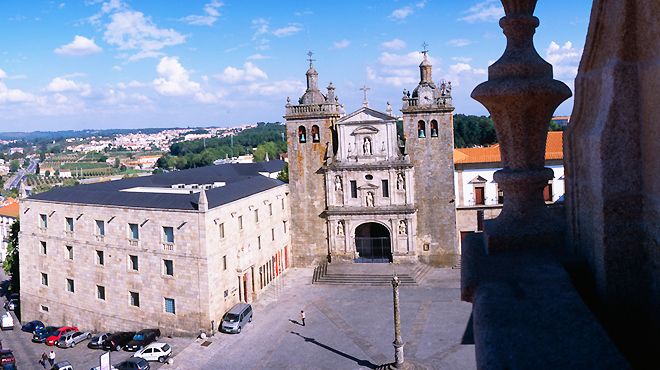The cloister of the Sé Cathedral, Viseu

The cloister of the Sé Cathedral, Viseu
Other
Composed by two galleries, the lower gallery dates from the Renaissance period and the upper gallery was added in the first half of the 18th century.
The Renaissance Gallery is very elegant with fine proportions, including the delicate work of the capitals of the pillars and the finely grooved shafts, that reveal the artists’ surprising degree of mastery over the hard granite stone. Prior to the 16th century the site was occupied by a royal palace, demolished at this time in order to build the cloister. The azulejo tile panels were created in the 18th century, and represent scenes from the life of S. Teotónio, the patron saint of Viseu.
In 1918, after works carried out on the walls, a Roman-Gothic door was found in the north wing of the cloister, connecting it to the central body of the church, constituting the most interesting surviving remnant of the primitive church. The eastern wing of the cloister houses the Renaissance chapels of the Calvary and Tierce.
The Renaissance Gallery is very elegant with fine proportions, including the delicate work of the capitals of the pillars and the finely grooved shafts, that reveal the artists’ surprising degree of mastery over the hard granite stone. Prior to the 16th century the site was occupied by a royal palace, demolished at this time in order to build the cloister. The azulejo tile panels were created in the 18th century, and represent scenes from the life of S. Teotónio, the patron saint of Viseu.
In 1918, after works carried out on the walls, a Roman-Gothic door was found in the north wing of the cloister, connecting it to the central body of the church, constituting the most interesting surviving remnant of the primitive church. The eastern wing of the cloister houses the Renaissance chapels of the Calvary and Tierce.




 Explore
Explore 
 Remember and Share
Remember and Share 


